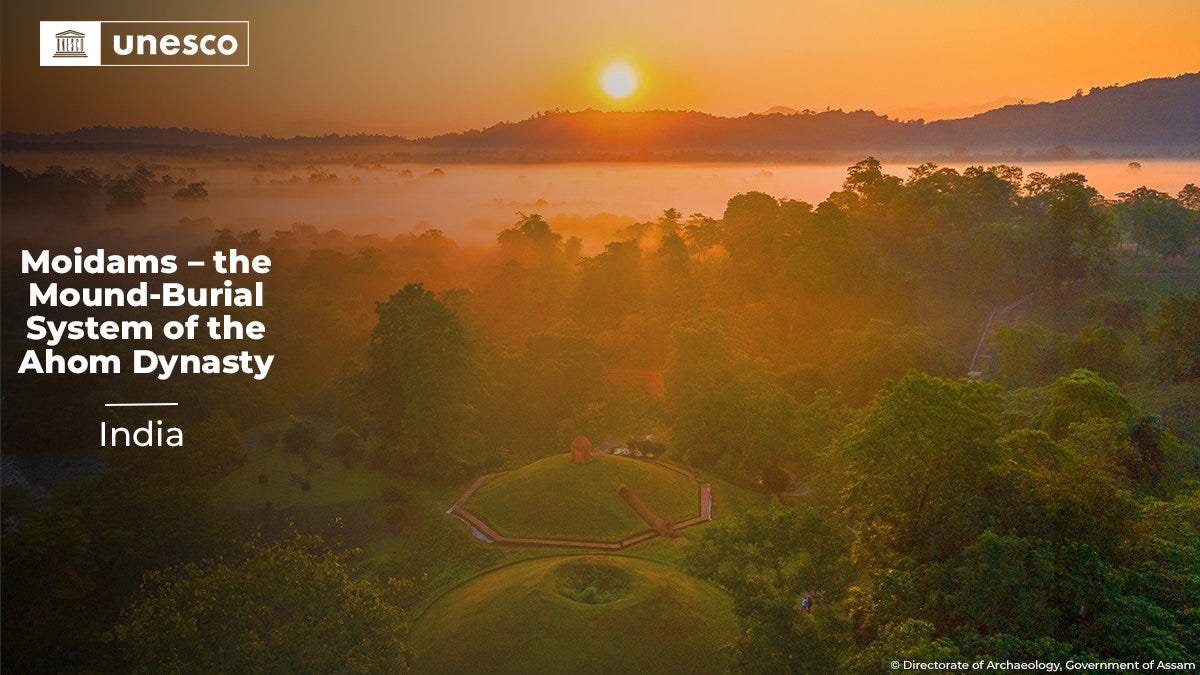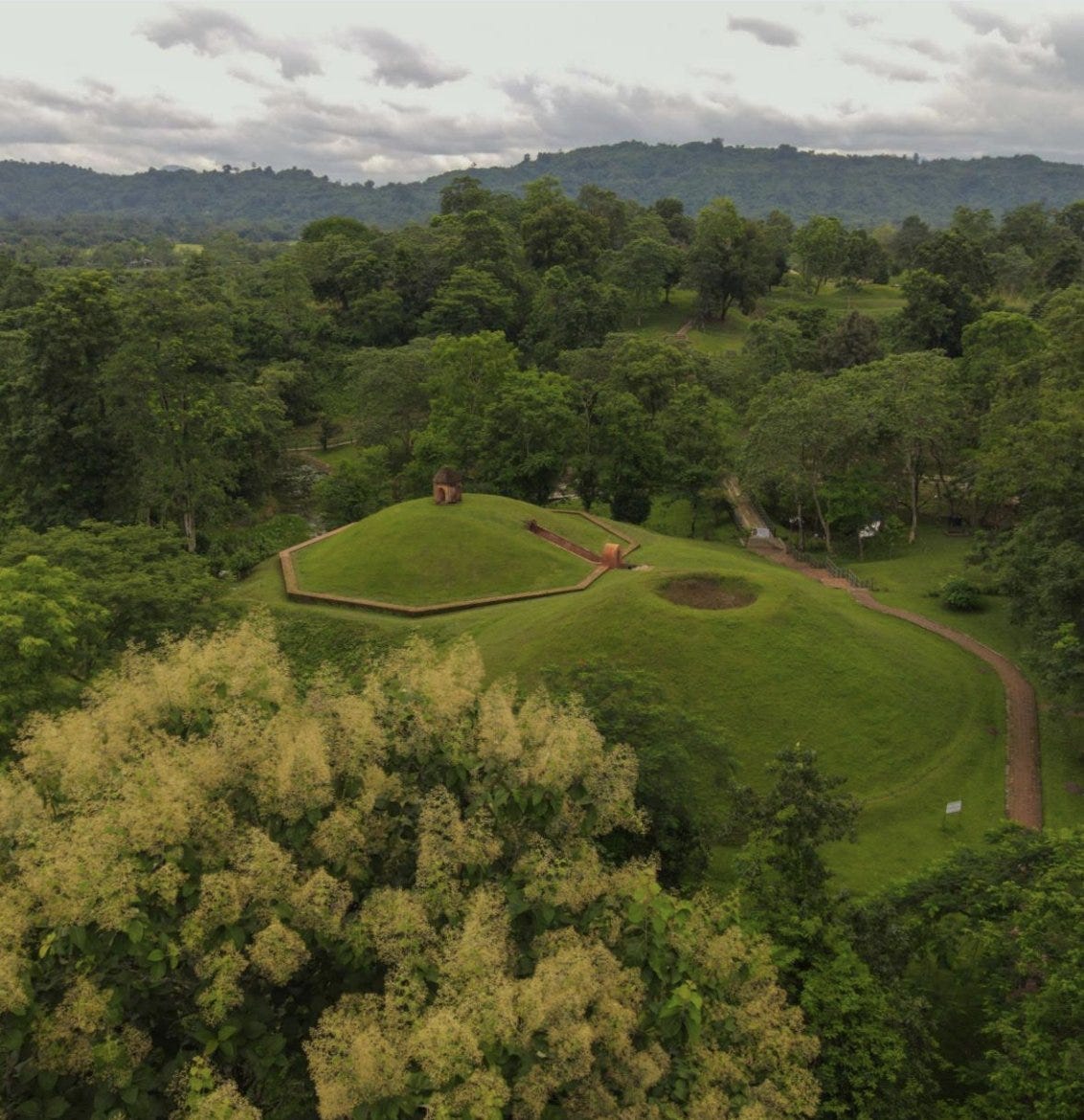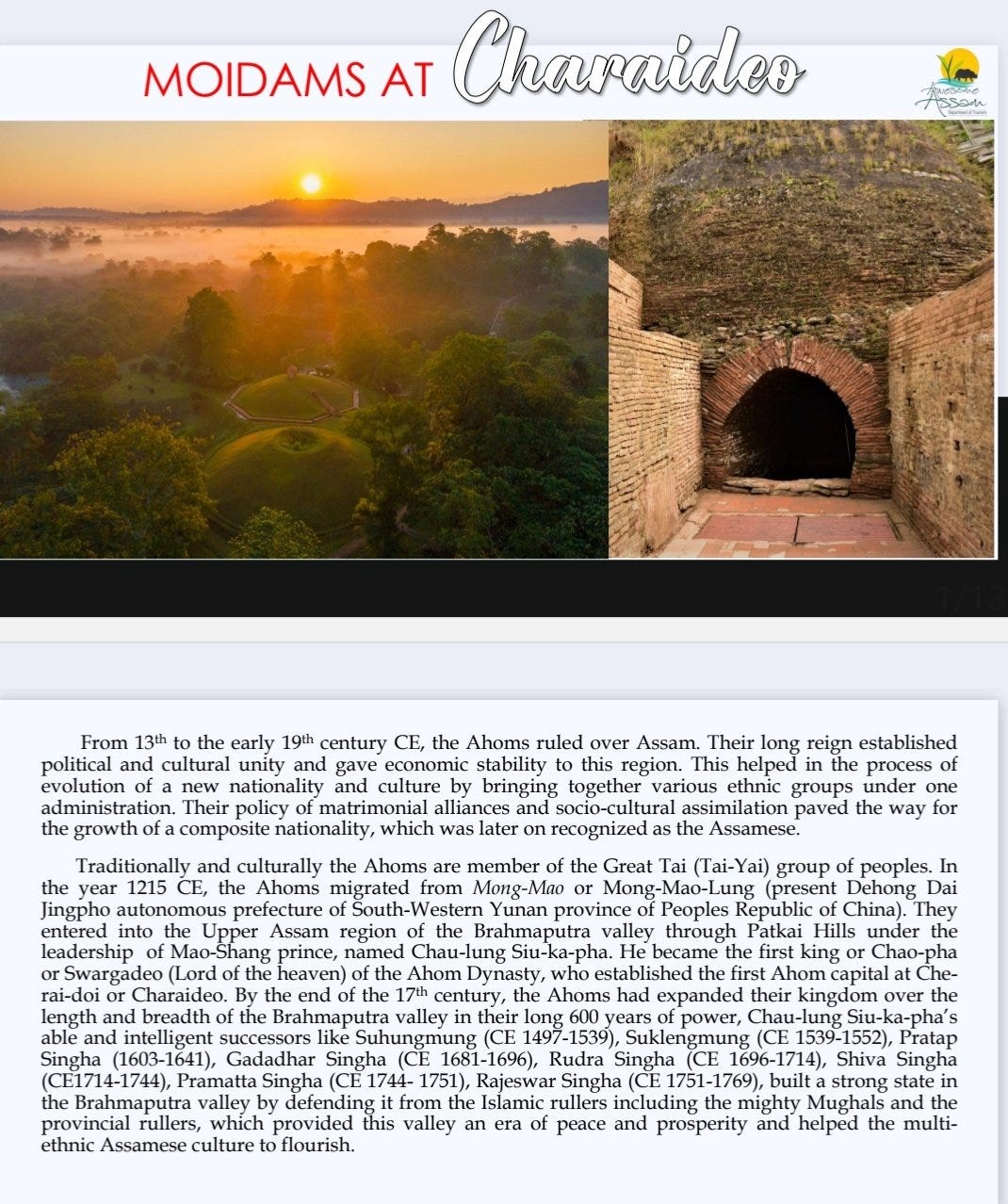Moidams of Assam: A New Jewel in UNESCO's World Heritage Crown
The Moidams, a unique mound-burial system of the Ahom Dynasty in Assam, India, have recently been inscribed on the UNESCO World Heritage List.
Introduction
The Moidams, a unique mound-burial system of the Ahom Dynasty in Assam, India, have on 26th July been inscribed on the UNESCO World Heritage List, marking a significant cultural achievement for the country at the intersection of archaeology, heritage, and tourism. This inscription, announced during the 46th session of the World Heritage Committee, which commenced on 21st July in New Delhi, makes the Moidams India's 43rd World Heritage property and the first cultural site from Northeast India to receive this prestigious recognition.
Historical and Cultural Significance
Origins and Legacy
The Moidams, located in the Charaideo district of Assam, represent a rich cultural tradition dating back nearly 700 years. These burial mounds were created by the Tai-Ahom people, who arrived in Assam in the 13th century and established Charaideo as their first capital. For approximately 600 years, from the 13th to the 19th century CE, the Tai-Ahom constructed these moidams, or "home-for-spirit," as part of their unique funerary practices. Burial is the predominant funeral rite of the Tai people, to which the Ahom people originally belonged. After the Ahom kings embraced Hinduism, they chose to bury the ashes following cremation.
Key Aspects of the Moidams
Structure: The moidams are hollow vaults built of brick, stone, or earth, varying in size.
Contents: They contain the remains of Ahom kings and royals, along with grave goods such as food, horses, and elephants. In some cases, queens and servants were also interred.
Sacred Geography: The Tai-Ahom created these burial mounds by accentuating the natural topography of hills, forests, and water, forming a sacred landscape.
Rituals: The site is associated with ongoing Tai-Ahom rituals such as "Me-Dam-Me-Phi" and "Tarpan," which are still practiced at the Charaideo necropolis.
Architectural and Archaeological Significance
Structure and Design of Moidams
A Moidam is a tumulus, or burial mound, built for the royalty and aristocracy of the medieval Ahom Kingdom in Assam. It consists of vaults with one or more chambers, a domical superstructure, and a hemispherical earthen mound with an open pavilion at the peak called chow chali. An octagonal dwarf wall encloses the entire Moidam, creating a distinct architectural style.
Comparisons with Global Sites
The Moidams are often compared to other monumental burial sites around the world, such as the pyramids of Egyptian pharaohs and royal graves in ancient China. They showcase the architectural skills and craftsmanship of Assam's masons. The site contains 90 Moidams of different sizes, representing the highest concentration of vaulted mound burials and mirroring the sculpted contours of the adjacent hills.
Conservation Efforts
Role of ASI and Assam Government
The Archaeological Survey of India (ASI) and the Assam Government have been instrumental in preserving these historic treasures. Despite challenges from early 20th-century treasure hunters, collaborative efforts have been made to restore and maintain the integrity of the site. The mission was culturally sensitive because the Moidams are associated with Ahom ancestor worship and the festival of Me-Dam-Me-Phi. The excavation of Moidams is considered an affront to Ahom tradition by the Ahom community in Assam and hence had to be conducted in an appropriate manner. The Moidams are protected under both central and state regulations to preserve their structural integrity and cultural uniqueness.
UNESCO Recognition Process
Spearheaded by PM Narendra Modi
The journey to UNESCO recognition was spearheaded by Prime Minister Narendra Modi, who nominated the Moidams as India's official entry in 2023. The International Council on Monuments and Sites (ICOMOS) highlighted the Moidams' exceptional testimony to a cultural tradition and their representation of significant stages in human history.
UNESCO Recognizes Assam’s Ahom Dynasty Moidams as World Heritage Site
Global Attention and Preservation
This UNESCO inscription brings global attention to the unique 700-year-old mound burial system of the Ahom Kings, highlighting the rich cultural heritage of Assam and India. It underscores the importance of preserving such monuments and contributes to the broader narrative of India's diverse history. With this addition, India now stands at the 6th position globally for the most number of World Heritage Properties, having successfully inscribed 13 World Heritage Properties in the last decade.
UNESCO Honours the Ahom Legacy
UNESCO’s addition of the Moidams, the unique burial system of Assam's Ahom Dynasty, to the World Heritage list, makes it India's 43rd UNESCO World Heritage Site. As of 2024, India boasts 43 World Heritage Sites, including 35 cultural, 7 natural, and 1 mixed. This marks the first cultural property from Northeast India to receive this prestigious recognition, joining Kaziranga and Manas National Parks as Assam’s third World Heritage Site.
The Moidams, characterized by pyramid-like structures, served as burial mounds for the Tai-Ahom dynasty that ruled Assam for around 600 years. The Tai-Ahom clan, migrating from China, established their capital in various parts of the Brahmaputra River Valley from the 12th to the 18th century CE. One of the most revered sites among them was Choraideo, where the Tai-Ahoms established their first capital under Chau-lung Siu-ka-pha at the foothills of the Patkai hills.
This sacred site, known as Che-rai-doi or Che-tam-doi, was consecrated with rituals reflecting the deep spiritual beliefs of the Tai-Ahoms. Over centuries, Choraideo retained its significance as a burial ground where the departed souls of the Tai-Ahom royals transcended into the afterlife.
In Summary
The Moidams of Assam, now recognized as a UNESCO World Heritage Site, are a testament to India's rich cultural and historical heritage. This significant achievement, facilitated by Prime Minister Narendra Modi's efforts, highlights the importance of preserving such sites. The Moidams not only enrich our understanding of the Ahom Dynasty but also add to India's illustrious list of World Heritage properties, showcasing the nation's commitment to celebrating and protecting its diverse heritage.










